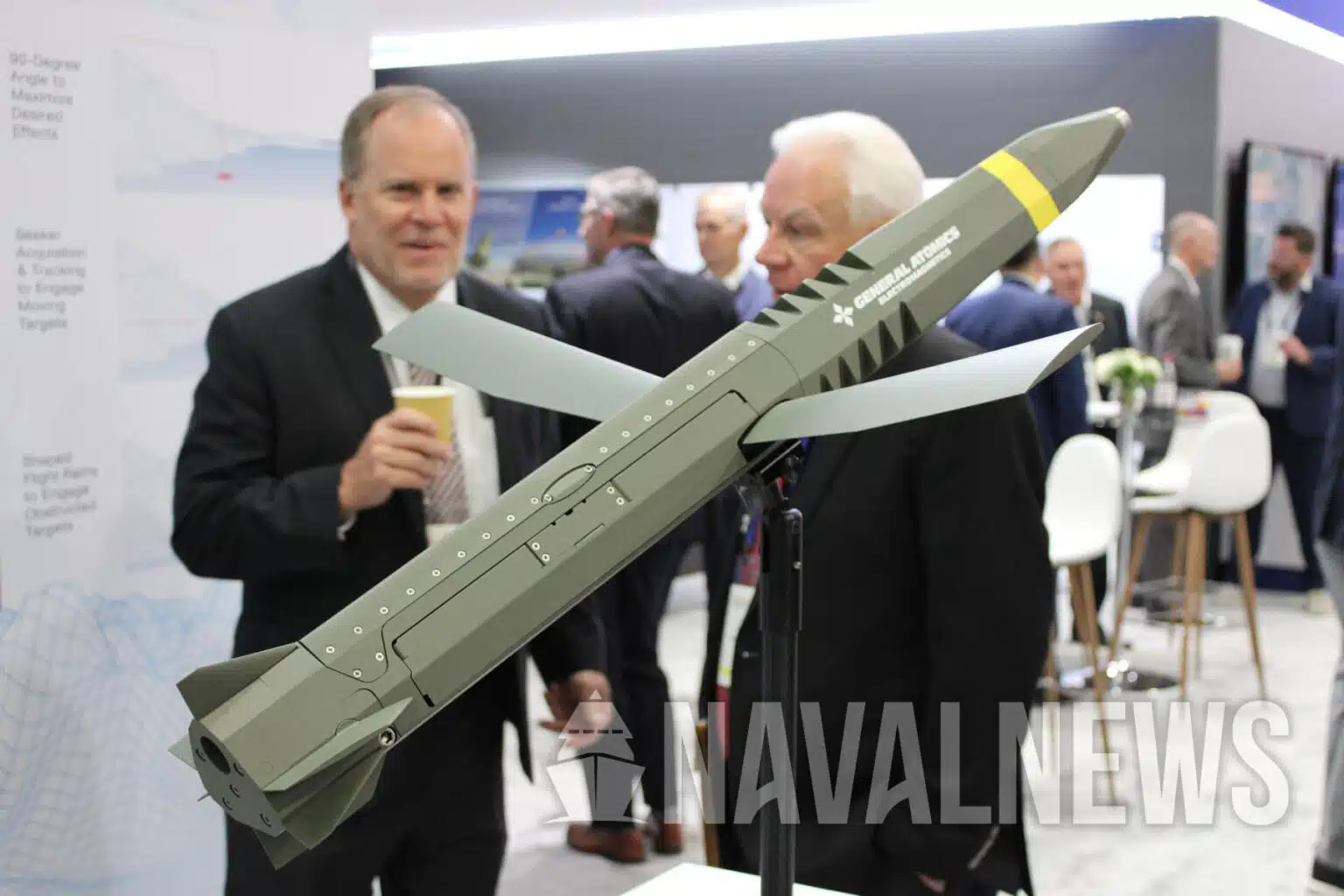General Atomics refines its long-range maneuvering projectile
20 October, 2024 General Atomics 1:1 scale mock-up of the Long Range Maneuverable Projectile (LRMP) at AUSA 2024. Photo by Carter Johnston General Atomics is leveraging its experiences in hypersonic, railgun, and drone development in its new Long-Range Maneuvering Projectile (LRMP).
Naval News reported on this. The project has been in the works for the past three years and was first presented in April 2023. Since then, the unconventional artillery round has matured from an idea to a system currently in testing.
"General Atomics decided that we're going to self-fund those [LRMP] as fast as we can. We're spending our profit to ensure we go as fast as possible. So we're limited by humans, nothing else right now," Scott Forney, President of General Atomics Electromagnetic Systems, explained to Naval News.
Characteristics of the projectile
 Long-Range Maneuvering Projectile (LRMP).
Long-Range Maneuvering Projectile (LRMP).
Freeze frame from Naval News video
"Where we ended up was, let's develop a projectile that will launch out of a barrel, a standard 155mm," Forney reported. General Atomics' experiences in designing electronics to withstand the forces sustained by hypersonics and railgun projectiles. After firing, the projectile will reach its peak at an altitude of 12 to 13.7 km, where it unfolds its wings.
From there, the projectile will plan and maneuver to its target. The range of a conventional 155 mm cannon is expected to reach 120-150 km. With recent lessons from the Russian Invasion of Ukraine in mind, Forney highlighted that LRMP does not rely on guidance from the Global Positioning System.
Instead, the company is currently developing an "alternate guidance system." The LRMP model displayed at AUSA contains two lenses, one on the nose and another oriented downward.
 LRMP rear view. Photo credits: Carter Johnston
LRMP rear view. Photo credits: Carter Johnston
"We have multiple seekers, camera systems on the projectile so that we can see ahead, we can see down, and we'll get to the target," Forney noted. Despite LRMP's relatively small size, General Atomics claims that the kinetic payload would be equivalent to a 120mm shell.
According to General Atomics, the U.S. Army, Navy, and Marine Corps have demonstrated their interest in LRMP. Aside from the round's advanced capabilities, Forney also stressed the company's efforts to simultaneously develop the production capabilities necessary to meet the expected demand.
Forney highlighted that General Atomics is currently seeking out more machines to meet the projected production quantities, which could reach up to 100,000 rounds a month following talks with interested U.S. armed services and international parties.